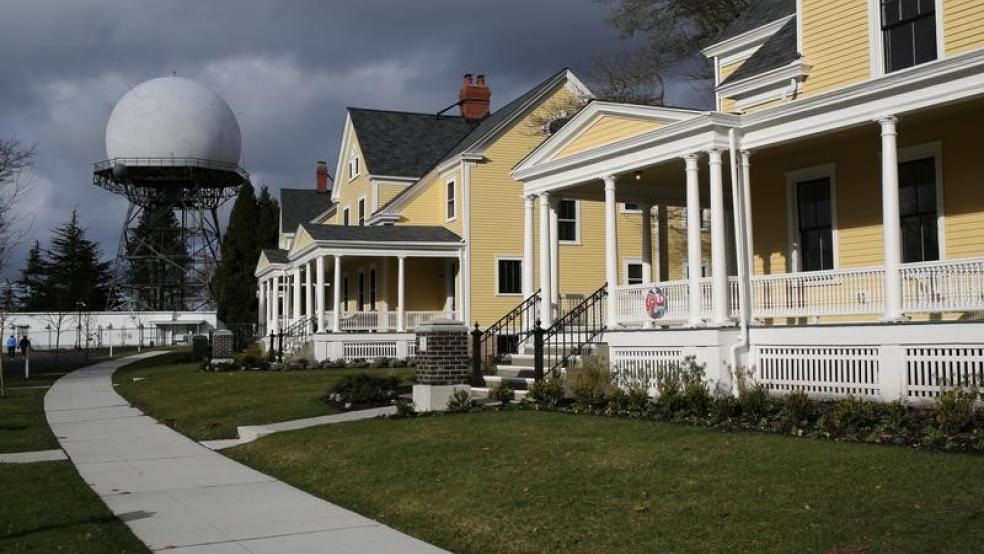April showers bring May home sales? That’s the hope for homeowners listing their properties this year.
Experts think this spring will be busy as a strong job market continues to fuel an already heated housing market. Whether you’re buying or selling this year, here are the trends you need to know about.
1. Homes are getting less affordable.
Home prices are continuing to rise in most parts of the country far faster than wages, making it harder for the average American to afford a home. The average wage earner in the first quarter of this year had to spend more than 30 percent of his income on mortgage payments, up from 26 percent the year before and 22 percent in 2012, according to RealtyTrac. “Buyers are going to have a tougher time than they did last year affording homes because prices have gone up again,” says RealtyTrac Vice President Daren Blomquist.
Related: 14 States With the Hottest Housing Markets
Despite the higher prices, buying a home looks more attractive when compared to the cost of renting today. Rents have gotten so high that buyers will save money compared to renting within two years of purchasing a property in 70 percent of U.S. housing markets, according to Zillow.
2. Mortgages are getting (slightly) easier to get.
The days of crazy, strict underwriting standards and low-ball appraisals killing deals seem to have finally passed. More than three quarters of purchase loan applications in March closed, up from just two thirds in 2015, according to Ellie Mae. Thanks to relaxed guidelines from Fannie Mae and Freddie Mac, lenders are also now able to offer conforming loans to borrowers who haven’t been able to scrape together a 20 percent down payment.
3. Mom-and-pop investors are in (and institutional investors are out).
Large institutional investors, who really drove the market for the past few years, have finally slowed their purchasing, as rising home prices have made the math less appealing. Given the high rents, however, they’re opting to remain as landlords rather than selling their properties just yet. Meanwhile, mom-and-pop investors, many of whom have abandoned the stock market, are also getting into the landlord game, purchasing single-family homes or vacation rentals as investments.
4. You’re less likely to compete with all-cash buyers.
Last year cash buyers accounted for just a third of home sales, the lowest level since 2008, according to a March report from CoreLogic. Cash sales peaked in January 2011, when they made up nearly 47 percent of the market, and they’ve been trending lower since then. CoreLogic projects that cash purchases will fall to 25 percent of sales — their historic average — by the middle of next year.
Related: The Worst US Cities for Commuters
5. Inventory is still really tight.
While rising home values are pushing more sellers to start listing their properties, inventory is still tight, particularly for starter homes. That’s because there are fewer distressed properties coming onto the market for sale. Builders put up about 650,000 new single-family homes last year, the highest number since 2008 but far below the historical average. “We’re just not building enough homes,” says Mark Dotzour, chief economist at Texas A&M’s Real Estate Center. “That industry hasn’t recovered enough to meet demand.”
6. Townhouses are having a moment.
Thanks to an increased demand for new walkable, “urban villages” among both first-time buyers and Boomers looking to downsize, there’s growing demand for high-density housing such as townhouses. The number of townhouses build last year increased 18 percent over 2014, and they now comprise nearly 12 percent of all new home construction, according to the National Association of Home Builders.
7. The prospect of rising rates isn’t spooking buyers.
After years of worries that rising rates would tank the housing markets, the Fed has moved at such a glacial pace that the real estate market has steadied itself and consumers are in a better position to absorb rate increases, especially ones that occur gradually. Rates for a 30-year mortgage are currently at around 3.6 percent, their lowest level in three years. “In most markets, rates would have to double in order to wash out the benefits of home ownership, and that’s just not going to happen anytime soon,” says Trulia Chief Economist Ralph McLaughlin.
Related: How to Save on Your Mortgage With a Small Down Payment
8. The hottest markets may have peaked.
As we all learned in the housing crisis a decade ago, long-term, double-digit growth in home prices just isn’t sustainable. After several years of such growth, the country’s hottest markets, such as San Francisco and Boston, seem to finally be leveling off. There’s less concern of a bubble this time around, though, since the buyers of homes in those markets either bought their homes with cash or with carefully vetted loans, meaning that a return of mass foreclosure is unlikely.
9. Good homes are going fast.
Nationally, homes are still moving quickly. A new report from Trulia finds that a third of properties sell within 30 days of hitting the market. Starter homes are moving the fastest and seeing the biggest uptick in prices, making it even more difficult for first-time buyers to get a foothold in the market. In March 62 percent of agents who wrote offers say faced bidding wars, according to Redfin.
10. The suburbs are staging a comeback.
The cost of both renting and buying a home in urban centers has gone up so quickly that many buyers are expanding their searches to the ‘burbs. More than half of today’s buyers are looking for a single-family home in the suburbs, according to the Bank of America Homebuyer Insights Report. However, there’s an emphasis on closer-in suburbs with city-like amenities such as downtowns and public transportation. Today’s buyers are willing to sacrifice the size of their home and live in denser communities in order to cut down on commute time.





